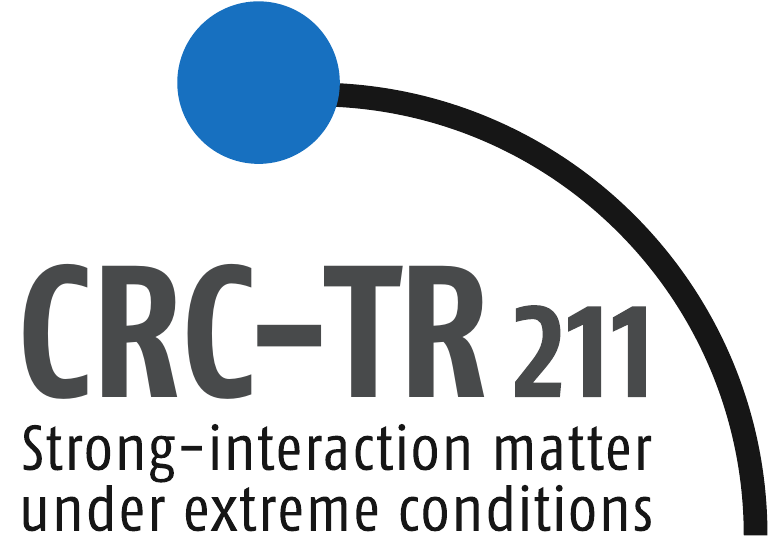
 Nuclear Theory
Colloquium
Nuclear Theory
Colloquium

 Nuclear Theory
Colloquium
Nuclear Theory
Colloquium
Venue: Physics Building, Max-von-Laue-Str. 1, Seminar Room PHYS 2.116
Time: Thursday, January 24, 4:30pm (s.t.)
Contact: hees@th.physik.uni-frankfurt.de
We present an analytical calculation of the covariance of the energy-momentum tensor associated to the gluon field produced in ultra-relativistic heavy ion collisions at early times, the Glasma. This object involves the two-point and single-point correlators of the energy-momentum tensor ($\langle T^{\mu\nu}(x_{\perp})T^{\sigma\rho}(y_{\perp})\rangle$ and $\langle T^{\mu\nu}(x_{\perp})\rangle$, respectively) at proper time $\tau\!=\!0^+$. Our approach is based on the Color Glass Condensate effective theory, which allows us to map the fluctuations of the valence color sources in the colliding nuclei to those of the energy-momentum tensor of the produced gluon fields via the solution of the classical equations of motion in the presence of external currents. The color sources in the two colliding nuclei are characterized by Gaussian correlations, albeit in more generality than in the McLerran-Venugopalan model, allowing for non-trivial impact parameter and transverse dependence of the two-point correlator. We compare our results to those obtained under the Glasma Graph approximation, finding agreement in the limit of short transverse separations. However, important differences arise at larger transverse separations, where our result displays a slower fall-off than the Glasma Graph result ($1/r^{2}$ vs.$\!$ $1/r^{4}$ power-law decay), indicating that the color screening of the correlations in the transverse plane occurs at distances larger than $1/Q_s$ by a logarithmic factor sensitive to the infrared. In the Glasma flux tube picture, this implies that the color domains are larger than originally estimated.